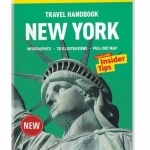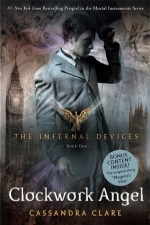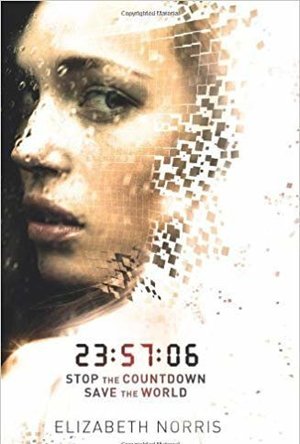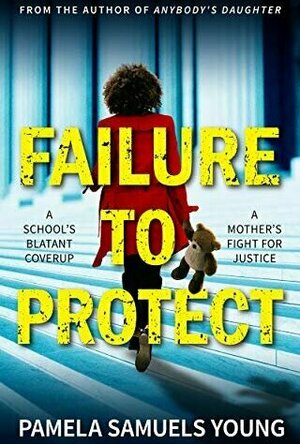
Art Of War By Sun Tzu
Business and Education
App
We have fixed formatting issues and are re-introducing Art Of War For Free with the bug fixes. ...
Kyera (8 KP) rated Clockwork Angel in Books
Jan 31, 2018
The clockwork automatons are intriguing, as they are made from neither Heaven nor Hell and thus the Shadowhunters have no experience dealing with them. They create a unique foe to fight against and are a greater mystery – as our heroes do not know who truly created them, or their nefarious purpose.
Each chapter is headed with an excerpt from a poem that Tessa might have found herself reading over the years. Each is not only a wonderful addition to the story but if you enjoy them, perhaps it will lead you to seek them out in their original forms. I personally do not find myself frequently reading poetry, but the first time I read this book I fell in love with the poems selected. It caused me to go in search of them and read poetry. Perhaps you too will find yourself inspired.
As with the Mortal Instruments, our main character is a female who is unfamiliar with the Shadow World at the beginning of the novel. Before long, she is completely embroiled in the world, the politics and must learn as she goes. In this novel, our heroine is given the Shadowhunter Codex to read which allows her to quickly understand the roles of the Shadowhunter and the world she didn’t even know existed. I have always liked Tessa and felt a kinship to her, as we are very similar.
Tessa is quite tall, especially for a woman in the Victorian era, brunette and loves books more than anything else (other than perhaps her family.) Her Aunt was a very learned woman, so Tessa received a decent education and fostered a love of reading. She is able to quote from books that she loves and does not discriminate between books considered high-brow and those considered for the lower class of society. Tessa is very intelligent and not afraid to voice her opinions, even though it was not widely accepted at that time for women to be sharp of tongue. She also does not like chocolate, which endeared her to me immediately as I also am one of the few people it seems who does not like chocolate.
Our two male leads are Jem and Will, who are parabatai but quite dissimilar from one another. Jem was originally from the Shanghai Institute but found himself in the London Institute when his parents were murdered by demons. He is quiet, kind, intelligent and loves Will like a brother. Will is a Herondale, with all of the charm that comes with it. He is more reckless, boasts about frequenting brothels and dens of vice, and despite his outward attempts to appear cheerful is prone to melancholy.
The Institute is filled with other Shadowhunters and servants with vastly different personalities who bring a lot of interesting storylines with them. Charlotte and Henry are the heads of the Institute, despite their young age. Henry is a brilliant inventor, although a bit scatterbrained. Jessamine was forced to live in the Institute after the death of her parents, but she has never desired to be a Shadowhunter.
The first book introduces us to the Shadow World of London, as Tessa is invited to travel from New York to London to live with her brother. Her plans do not turn out as she had expected and it leads her on an adventure with the Nephilim. It is fascinating to see how different the Shadowhunters of this era are, and yet utterly the same. It was also interesting to see how the Shadowhunters view the Downworld. While it was not entirely equal to the time of the Mortal Instruments series, you realize that is has improved in the century since the Infernal Devices and must be leagues above the treatment in the earliest years of the Nephilim.
Whether Clockwork Angel is your first foray into the Shadow World, or not, it is a highly entertaining and well-written novel that I could not recommend more. Many people feel that this series is the best of the three, so if you’ve been considering reading any of the Shadowhunter Chronicles but were not quite sure – perhaps this is a good place to start. I personally would recommend reading a number of the Mortal Instruments before beginning this series, but that is just my opinion. Either way, if you have not yet read this book – please go do so now! It is one of my favourites and I hope that it will be yours as well.
graveyardgremlin (7194 KP) rated Unraveling (Unraveling, #1) in Books
Feb 15, 2019
The author did a great job setting up the story with a slow build that introduces Janelle's life, both at home and at school, along with any free time she may have, and accelerates once it hits the halfway point until it reaches the book's climactic ending. In particular, the development of her home life was interesting and had depth. She has a mother who's bi-polar and not "there" most of the time and a father who seemingly avoids dealing with the realities of his wife's mental illness by being a workaholic, so all the household responsibilities fall on Janelle's shoulders. She takes care of her family and does the majority of the cleaning, cooking, laundry, and most importantly of all, being a mother to her younger brother, Jared. She makes sure he does his homework, has meals, and gets to school on time. What's nice about their relationship is that he actually respects his sister and there isn't much in the way of petty arguments, which was refreshing. I liked the whole interrelationships of the core family: Janelle, Jared, and their father. They all loved each other, faults and all, and even adding in the situation that Janelle's mother is in, they felt like a genuine family. Adding to that, both Alex (Janelle's best friend and my favorite character) and Struz (her dad's partner/friend) were a part of the family too. If there was anything that stood out in the book for me, it was how people related to each other in it, for good or ill. I loved Alex and Janelle's friendship, again it was really authentic, and they were just that, best friends. No romantic agenda going on, no secret one-sided yearning, only true friendship where they looked out for one another.
Janelle herself was a strong character, but not so strong she never showed her feelings. She could be quick-tempered, but usually for good reason, she stood up for herself when necessary, and was sensible, so while she could be judgmental and at times conceited, those flaws made her realistic. Nobody's perfect. The experiences she's had to live through have molded her, so every action and reaction she made made perfect sense to who she is, whether it's flying off the handle or falling into pieces. While I can't say I ever totally liked her, I understood and respected her; there aren't many YA characters I can say that about. Every character in the book had their own identity, whether they had a small role to play or a bigger one, so there was no confusion to who they were. Ben, the mysterious "stoner", is of course the love interest. He could have been more fully fleshed out, but I still got a basic idea of who he was and he's at least a nice guy, which is a novel idea these days. The love story between Janelle and Ben felt like it could actually happen that way. The chemistry between the two was well-written so the magnetic attraction between them is palpable. I remember how it is to be a teenager (scary but true), and I hate to be such a broken record, but it felt realistic. Do I think it was love? No, not yet, but they have a connection and it's a start towards something serious.
The plot is intriguing and has a lot of good ideas that generally mesh well together. Each short chapter, some less than a page long, features numbers counting down to the big event that's at the core of the novel. I'm not going to go into details since it'd be too hard to do without giving anything away, but I will say that I enjoyed how the story was told and how it unfolded. While this is sci-fi, it's light on the 'sci' part and not everything is explained as well as it could be, but hopefully the sequel will tackle some of the bigger components. Most of my complaints are trivial: the ending was rushed for an almost 450 page book, there was a passing comment about AAA that wasn't right, the phrase 'junior detective' was used just a little too much, an info dump that would have worked better as dialogue, and a couple of other inconsistencies that hopefully were caught before the final copy was printed. However, I admit to some ire at an event that happened at the end, I just didn't feel there was any need for it plot-wise and thought it total overkill. That was unfortunate but overall I still enjoyed the book cover to cover. A solid four-star book that's a cut above the rest and left me looking forward to the sequel.
Heather Cranmer (2721 KP) rated Failure to Protect (Dre Thomas & Angela Evans #4) in Books
Nov 12, 2019
The plot for Failure to Protect was solid. Nine-year-old Bailey Lewis is constantly being bullied at her school. When something major happens, Bailey's mother, Erika, decides to sue the elementary school. However, the principal, Darcella, is more concerned with keeping the school's good record intact instead of worrying about bullied students. The principal will do whatever it takes to make sure her school's stellar reputation doesn't get soiled even if it means doing some bullying herself.
Pamela Samuels Young did such a stellar job with the world building. Her knowledge of the court process and justice system is fantastic. Young is an attorney, and it's obvious she knows her stuff. Unfortunately, the subject of bullying in schools is all too real, and sadly, many schools are more worried about their reputation and all the paperwork and time a bullying case would take than actually caring about a bullied student. This fiction novel reads like a true story. There are a few plot twists which make this book even more interesting! Failure to Protect also answered every question I had. There's no speculation in Failure to Protect, and there's also no cliffhangers. This book is part of a series, but it's the first book I've read in the series, and I feel like it works as a standalone.
The pacing in Failure to Protect is done perfectly. Every single paragraph, and every single chapter flowed smoothly into the next. Not once did I want to put this book down. It had my attention throughout! I was also a fan of the short chapters which I felt helped with the pacing.
The best thing about Failure to Protect, besides everything, were the characters. Each character had such a unique personality which really helped them to feel like a real person rather than just a character in a novel. I loved little Bailey, and I just wanted to hug her and let her know that I'd protect her against her bully. It was heartbreaking reading about all she went through in her young life from losing her father not too long ago to being relentlessly bullied in school and online. I also felt horrible for her mother Erika. She also went through two horrible tragedies including one a parent should never have to go through. I was constantly in her corner, and I kept rooting for her throughout the whole bullying ordeal with the school. Erika felt like what happened to Bailey was mostly her fault, and I wanted to tell Erika that sometimes it's not easy to know everything about our children. Dre was my favorite character. I enjoyed his thought process and how passionate he was about everything. It was obvious how much he loved his goddaughter Bailey. I loved how Angela grew as a character when it came to her relationship with Erika. At first, she wasn't big on Erika, but it was obvious how much she did end up caring for her. Angela and Jenny were both fantastic attorneys, and I loved how they were willing to dedicate all their time and knowledge for Bailey's case. Darcella, the principal, was such a horrible person. Young did a fantastic job at creating Darcella to be the antagonist. So many times I was so angry with Darcella. I wanted to just shake her and ask her why she didn't do anything for Bailey. Darcella does explain why she decided to overlook the bullying, but I just wanted to know why she bothered to work in a profession dealing with children if she didn't have any empathy. I was so annoyed with Darcella. I was also annoyed with Ethan Landers, Darcella's attorney. I know he was just doing his job at the end of the day, but it wasn't easy to read about how he could just side with the enemy. Zola, Bailey's teacher, was also an interesting character. She was so conflicted about doing the right thing, and I liked reading about why she chose to do what she did. Apache, Dre's best friend, was a minor character in Failure to Protect, but he gets a mention because I loved his scenes. He was such a character, and I loved how comical he was especially when it came to helping out Dre.
Trigger warnings in Failure to Protect include bullying, racism, sexual situations (although not too graphic), suicide, death, lying, alcohol, mentions of past drug use and selling, profanity, and mentions of violence.
All in all, Failure to Protect is an emotionally well written novel. It would make a fantastic Lifetime movie - at least that's what I kept thinking whilst reading it. The story line is something that unfortunately is so commonplace in a lot of schools. I would definitely recommend Failure to Protect by Pamela Samuels Young to those aged 18+. I think this is a book that everyone should read and can relate to on at least some level. If you do decide to read Failure to Protect (which you should), please know that you'll feel a vast range of emotions!
--
(A special thank you to Pamela Samuels Young for providing me with an eBook of Failure to Protect in exchange for an honest and unbiased review.)
Haley Mathiot (9 KP) rated The Coldest Girl in Coldtown in Books
Apr 27, 2018
1. I liked that Vampires were both romanticized, and despicable. They were beautiful, physically, but they were ugly and awful and broken and were the worst thing to happen to the world. I liked that even though there was a love story, it wasn’t a “Turn me into a vampire so I can be with you forever” story.
2. I loved the plot. It was action packed from the first chapter, easy to follow, but still complicated. The amount of twisting and changing and plotting it must have taken is astonishing, and I have become a fan of Holly Black simply because of her artistry of working this plot.
3. I absolutely loved the protagonist, Tana. She is awesome. She is brave, kick-ass, hard working, she loves passionately in her own way, she is broken and imperfect, and she makes hard choices. She’s stubborn in a good way. She’s wonderful. I want to be like her when I grow up.
4. I liked all the characters. They were all well developed and unique. I would have liked to get to know Pearl, her sister, a little more. I would have liked more relation between Tana and Aiden pre-vampiric adventures, but all things considered, all the other characters were still awesome.
5. The writing itself was lyric, descriptive, and engrossing. It was almost impossible to put down (I only stopped because my ipod died…)
The one thing I didn’t like was the ending. It was beautiful and excellent and sweet and nerve wracking… but the very last bit, the conclusion, the “now what,” was frustrating. I didn’t know what was going to happen and that irritates me. (HGHLIGHT TEXT FOR SPOILERS: does she sweat out the cold, or not? does she stay human? or forever cold? does she age? so many unanswered questions.) I know the open ending lends itself to the feel of the novel. You know it ends one of two ways, and you know both options are equally possible. That keeps it in your mind. It makes you wonder. It lends itself to a sequel, if the publishers decide to pursue one. But it still annoyed me because I like to know what happens!
All that being said, It was an excellent book, and I would re-read/listen to it in a heartbeat.
*pun intended.
Hazel (1853 KP) rated The Poisoning Angel in Books
Dec 17, 2018
Some people may already know of the prolific French serial killer of the 1800s. Hélène Jégado, over a lengthy period of forty years, is thought to have murdered at least thirty-six people, most likely more, in the region of Brittany. By being hired as a cook in a wide range of establishments throughout her life gave her the opportunity to poison people through their meals, predominantly with arsenic. Jean Teulé, a French novelist, combines his own imagination with the historical statistics in order to create an insight to the tale of this infamous poisoner.
The tale begins at the beginning of the nineteenth century, when Hélène is only seven years old, in the small hamlet town Kerhordevin, Plouhinec. Nicknamed Thunderflower by her mother, a name that she is often referred as throughout the narrative, she becomes fascinated with superstitious stories about Death’s henchman, Ankou. In order to extinguish her fears of this formidable character – something she later claims – she decides to become Ankou beginning with the poisoning of her own mother. Soon after she sets off on her first of many journeys to work as a cook, where her killing spree begins.
It may seem surprising that she were not caught earlier on in her murderous career, especially with entire households succumbing to their deaths, but - at least in Teulé’s telling - the Breton’s still held strong belief in their old Celtic superstitions and altered between worshipping Hélène as a saint for not dying herself, or accusing her of witchcraft and bringing misfortune wherever she went. It is not until Hélène is approaching the age of fifty that the police begin to investigate, arrest and finally send her to the guillotine.
Each chapter begins with a map, detailing Hélène’s journey through Brittany so that the reader can see just how many places she went doing Ankou’s work. Teulé also turns this disturbing historical novel into a black comedy with the inclusion of two wig makers from Normandy who happen to go where Hélène goes, although are completely unconnected to, to whom bizarre misfortunes constantly fall.
<i>The Poisoning Angel</i> is an interesting tale and absurdly fascinating at times. From time to time it could fall a bit dull with the repetitiveness, but in a way it could not be helped, as it remains a fact that Hélène Jégado poisoned a large number of people. Melanie Florence must be commended for her translation from the original French, something that is by no means an easy feat.

New York Marco Polo Handbook
Book
For advice you can trust, look no further than Marco Polo. The New York Marco Polo Handbook offers...

Empirical Modeling and Data Analysis for Engineers and Applied Scientists: 2016
Book
This textbook teaches advanced undergraduate and first-year graduate students in Engineering and...

If the Corncrake Calls
Ian Niall, Sheila Pehrson and Barbara Greg (Illustrator)
Book
When the Scottish writer John McNeillie died on the 24th June 2002 aged 85, he left behind a legacy...




